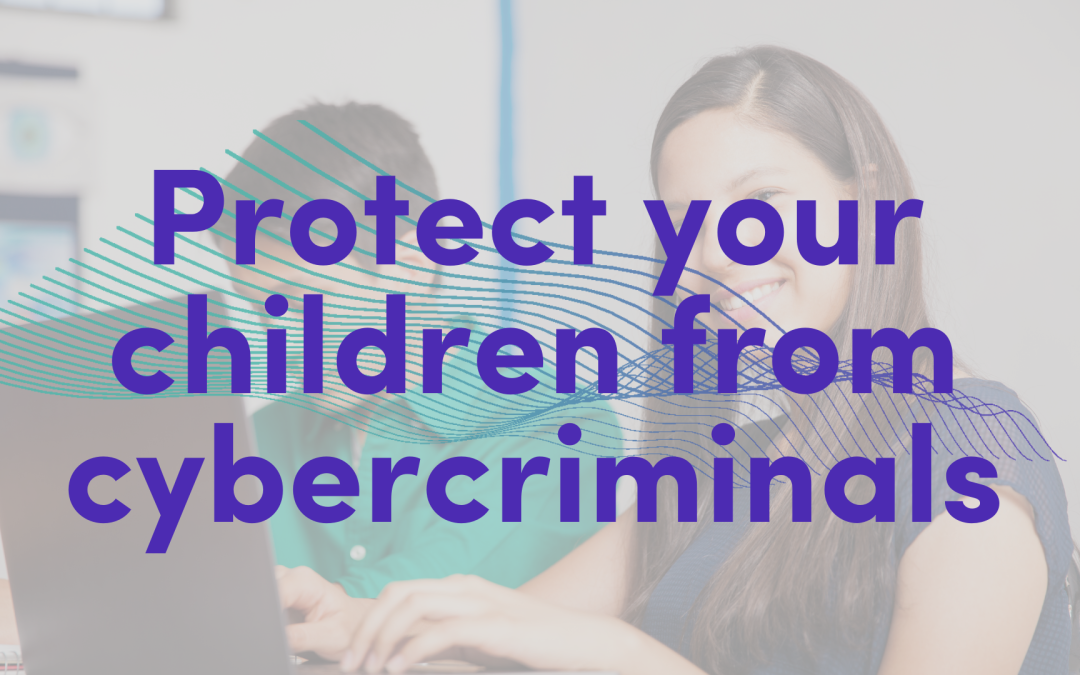September is just around the corner, which means summer is slowly winding down and the holidays are well and truly over.
It is also back to school! A period rich in emotions, but which underlines a whole new beginning as much for the parents as for the children.
This is a perfect time to educate yourself about cybersecurity and the risks your teens are exposed to.
The correlation between your teenagers and cybersecurity?
Anyone who browses the web is effectively susceptible to a cyber attack. However, did you know that of all age groups, adolescents are most at risk?
Surprising, is it not?
It would be logical to think that those who thrive in a digital universe would be those who are the most apt to thwart the traps of cybercriminals… but no!
Rather, they are the most vulnerable.
Why my teen?
Why are our adolescents prey to cybercrime?
Several elements explain the risk. First, as mentioned above, young people live online. It has effectively become their source of communication, interaction, entertainment, and fun. Today’s teenagers are therefore very familiar with the joys and advantages of the Internet, but without necessarily recognizing the risks and, above all, the consequences that accompany them.
The main reason: downloads.
The youth are downloading!
Whether it is music, applications, online purchases, or video games, nowadays everything goes through downloading. It is unfortunately one of the most used tactics by cybercriminals to infiltrate your children’s data and therefore yours too.
According to a study carried out by Coalition, an insurance company, cybercrime, and more particularly ransomware would have increased by 100% in 2019 and by an additional 40% in early 2020.
Child’s play…
Of all the types of downloads mentioned above, video games pose the greatest risk. In 2020, cyberattacks targeting digital games exploded with a 340% increase in cases. This represents the largest increase recorded in 2020 according to the firm Akamai. This same company also recorded more than 245 million attacks through video games, representing 4% of the 6.3 billion cases worldwide.
Data that should leave no parent indifferent.
However, the reason why web criminals target their attacks on video games is quite simple: accessibility. Indeed, today most digital games are obtained online and are then directly connected to your Internet.
All cybercriminals need to do is send a fraudulent email (spam) posing as an online gaming company, asking for personal information or payment. These messages may also appear directly in-game, offering the user some discount or promotion.
This is known as impersonation.
Impersonation are spoofing attacks sent via email. This is a type of phishing where the attacker impersonates a legitimate sender to trick the recipient into clicking on a malicious link or attachment. These attacks are typically used to steal sensitive information such as login credentials or financial information.
Unaware of the dangers to which they are exposed, your teenagers will be inclined to respond to them. From then on, the cybercriminal(s) automatically have access to your data.
Child’s play.
Click “share”
However, there is another important factor regarding teenage cybersecurity: social media.
For over ten years now, digital platforms have taken a very important place in our society and more particularly among the youngest. Indeed, people under the age of 34 are the heaviest internet users in the world and social media certainly has something to do with it, and with good reason, since, as mentioned above, these platforms have become a great source of entertainment and fun.
However, like all good things, the Internet and social networks hold a negative and somewhat toxic side to their users. For many, digital platforms can create a sense of isolation and depression. According to Statistics Canada, cyberbullying and cyberstalking are the greatest danger to our children. According to this study, 19% of young people between the ages of 15 and 19 say they have been victims of online crimes.
So, a question arises: why are teenagers more likely to be the target of this cybercrime on social networks?
The answer is information sharing.
Nowadays we are continually encouraged to share and publish our personal lives online. This is even more particularly the case for teenagers, for two reasons; first, the habit of sharing everything is now simply part of their DNA. The second reason is the pronounced need to fulfill a sense of belonging. So, if their friends share their lives, your child will too. This is the nature of adolescence. Thus, they will be even more likely to disclose as much personal information as possible, with a minimum of security in place.
Information sharing can also lead to the following problems:
– Identity theft
– Scam
– Sextortion
– Cyber-aggression
The solutions
The good news is that there are a few solutions to help you monitor your children’s behavior online and avoid the worst.
Among such solutions we can see:
Installing a parental control system: This system is effective for several reasons. First, you can block access to certain sites and applications as well as limit screen time. Normally, you can delimit these activities on the phone and the computer. Additionally, you can add multiple users. Did you know that with Windows 10 you have Microsoft’s Family Safety built into your system?
Educate your children about the risks: Certainly, this is not an easy task! However, having an open discussion about the risks of their actions has two benefits: First, you warn them about malicious sites and the risks they pose. Second, prevent potential dangers such as sexual predators, identity theft, scams, and sextortion.
Place the family computer in a common area: When supervised, your children are less likely to go to non-recommended sites because they know there is adult supervision nearby. Besides, when it is time to go to sleep, do not let them leave with their phone.
Check their search history: It is important to know the habits of your children online to avoid any danger and this, for their own safety. Check the trash folder too!
Use a good antivirus: A good antivirus will add a level of protection.
In conclusion, making your children aware of the dangers linked to the Internet is not only essential for the protection of your data but also for their well-being. So before anything else, it is important to have a real discussion with them so that they understand the issues in question. Make them aware of the risks and pitfalls they may encounter online and explain the consequences associated with them.
After all, better safe than sorry!
How is your cybersecurity? To better understand your current situation answer this

